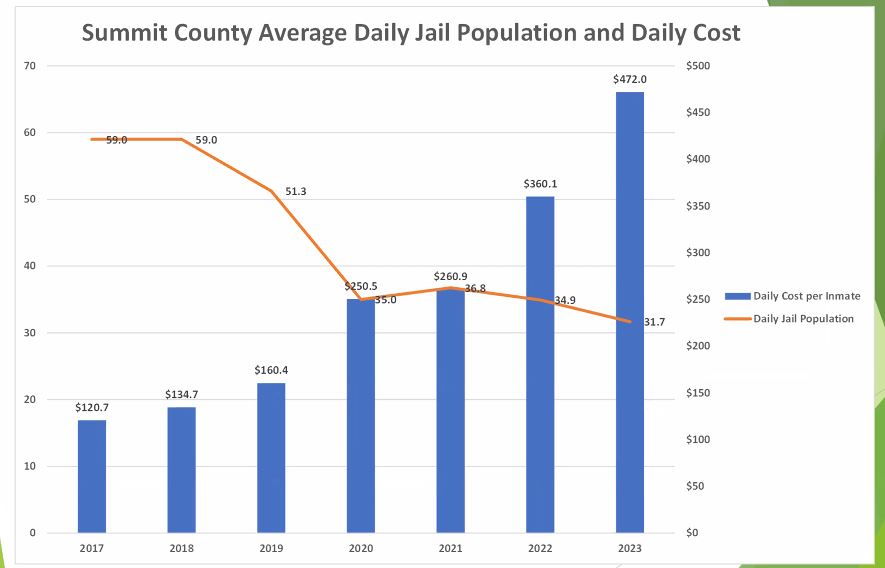Fewer inmates are spending the night at Summit County jail, but the price to hold them is quadrupling.
What’s happening?
Let’s start with numbers from a citizen budget advisory committee, newly appointed by the board of county commissioners to review county budgets.
In 2017 the county was spending $120 per day, per inmate ($2.6 million for the year). By 2023, the most recent year available, the county spent $472 per inmate ($5.46 million for the year). Jail expenses cover everything from deputies and surveillance to food, cleaning and phone calls to lawyers.

Based on this and other expenses – one controversial number says public safety eats up nearly half of the county general fund – citizen advisors recommend a freeze on funding for public safety, including the jail and sheriff’s office.
Sheriff Jaime FitzSimons calls their numbers distorted.
“Whether we have one inmate or 93 the staffing doesn’t change,” FitzSimons tells Krystal 93. “The county has always run minimal staff and minimal security, but it doesn’t change. The only thing that has changed is salaries and benefits approved by the county commissioners.”
In 2020 FitzSimons says he built a five-year public safety plan with county commissioners, including salary and staffing increases. At the time they agreed this would make Summit more competitive, meeting the demand for deputies in the jail and on patrol.
And it has. Today the sheriff’s office is twice as big (72 to 151 employees) and fully staffed with starting pay of $38.21 per hour for patrol deputies, $7 more than state average. It also added a three-person team made to keep people out of jail. Called the S.T.A.R.R. team (Strategies to Avoid Relapse and Recidivism) it is unique to Summit, working closely with the S.M.A.R.T. co-responder teams, which specialize in mental health crises. Both are fully funded by grants.
“The people of this county deserve an honest, full accounting of how their safety is protected—not a spreadsheet with selective math and no context,” FitzSimons says.
A lot has changed since this five-year plan was designed. Two commissioners and two county managers resigned. The county finance director retired. Colorado voters approved a pair of law-enforcement initiatives for body-worn cameras and officer retention, but with no guaranteed state funding, what county officials call “unfunded mandates.”
“We are out to make sure the commissioners and public at large understand the data,” citizen advisor Matt Swoboda says. “We are not out to de-fund the police.”

